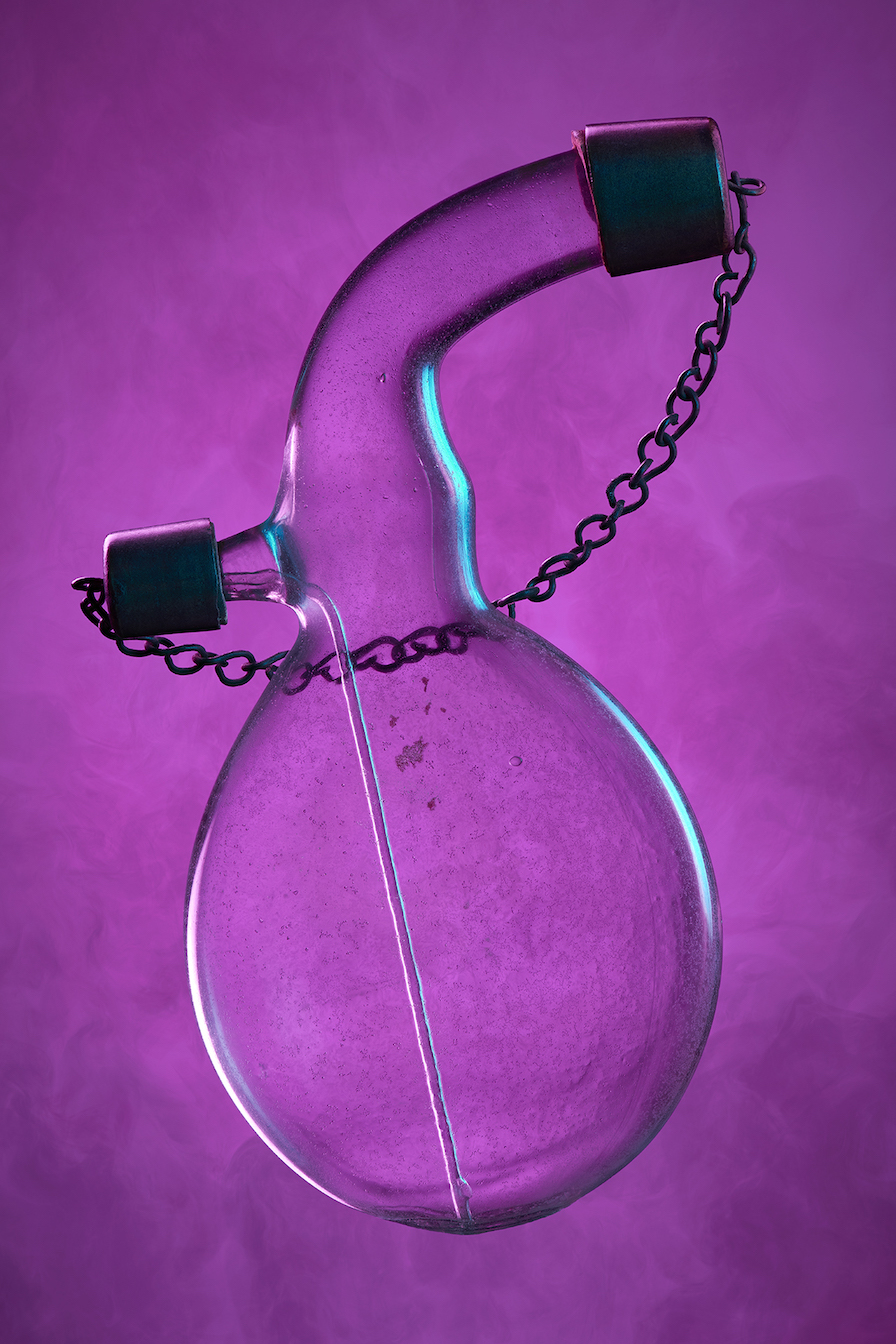© Theo Deproost
Theo Deproost was given free rein in the collection of the Royal College of Physicians, casting his lens over objects ranging from cigar lighters to anti-pollution masks. The results are both educative and eccentric
Theo Deproost takes niche, specialist items from museum collections and imbues them with new life, a process of transformation. The British artist’s photographs expand the scale of these forms, flooding the originals with bold hues and foregrounding intricate details that the naked eye may miss.
For his latest project, Unfamiliar, Deproost worked with Debbie Jegede from The Royal College of Physicians in London, choosing 11 items to photograph from the institution’s modern and historical medical collection. The final selection includes an ornate silver cigar lighter from the 1930s, a boxwood stethoscope from the early 1800s, and a used 21st-century anti-pollution cycling mask complete with sooty filters.
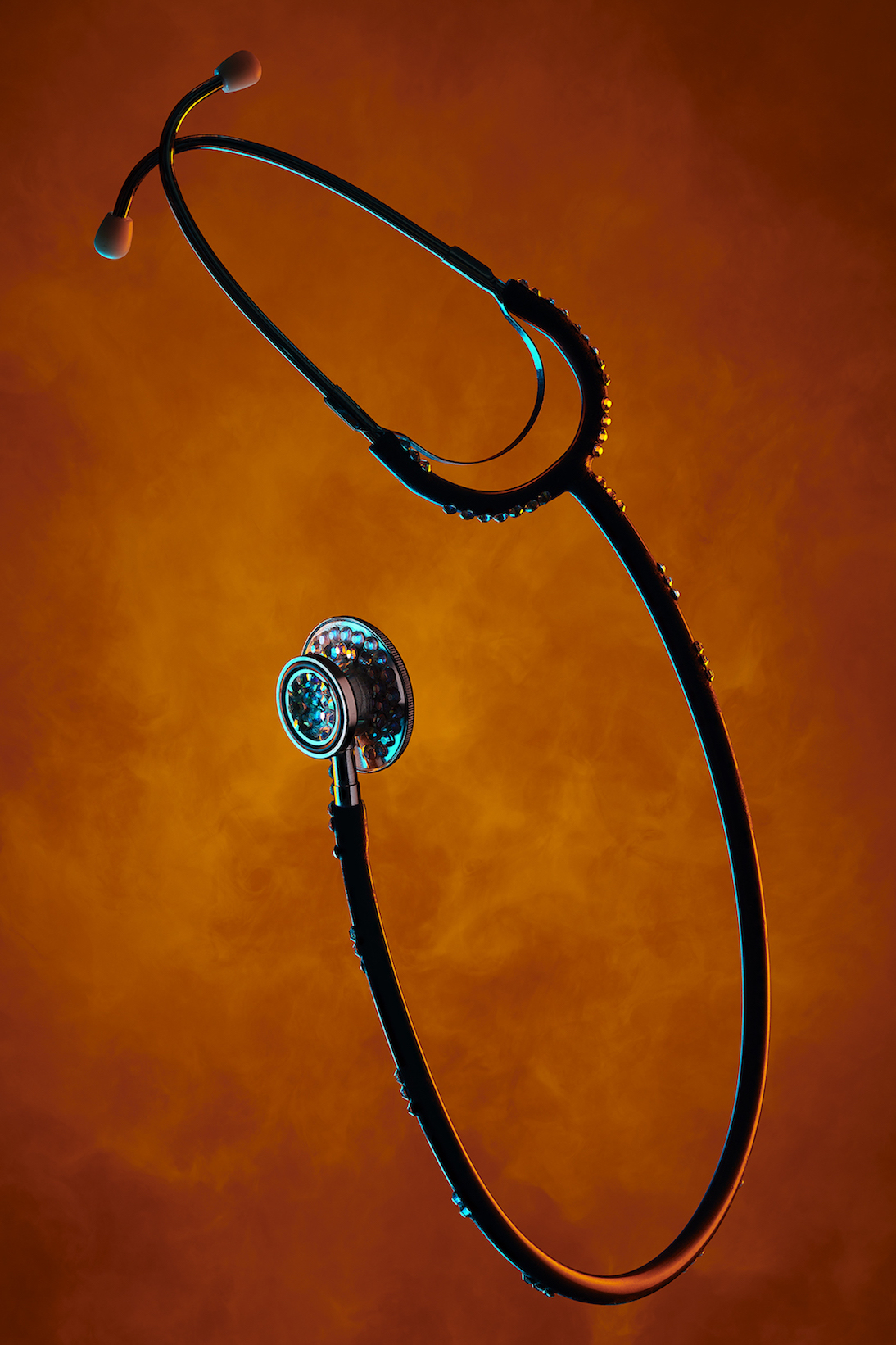
Unfamiliar is the latest in a series of works that Deproost has created in collaboration with museum collections. Lost in Time (2020) focuses on the natural world, featuring butterflies, rocks and taxidermied creatures from Gloucestershire’s Museum in the Park. He also photographed vintage clothes, tools and household items from London’s Museum of the Home for Re:Collect (2022). “With all my museum projects I work with items that are stored; they aren’t displayed,” he says. “I think that’s what makes it conceptually interesting for me. It also allows the museums to make more of their collections. Often items are collected but then just stored and left in boxes.”
For Unfamiliar, Deproost and Jegede concentrated on respiratory objects, many of which can be traced back over 100 years. “I think if I hadn’t been working with Debbie, I would have been slightly overwhelmed,” he laughs, recalling the first time he visited the expansive collection. “Because her area of interest is around respiratory medicine, it gave us something to focus on. It could have been hard to know where to start otherwise.”
The final photographs, full of moody coloured lighting and smoke trails, veer between realistic object depictions – the likes of which are usually displayed at a much larger scale – and abstracted closeups, lending the items a weapon-like quality. The bottom few centimetres of the delicate cigar lighter, a tiny chain-like form wound around a rod of metal, takes on the malice of a weighty morning star when shown through Deproost’s lens. The image of the cycling mask looks similar to an insect’s face in close-up, the giant hatched disks akin to bulging eyes.
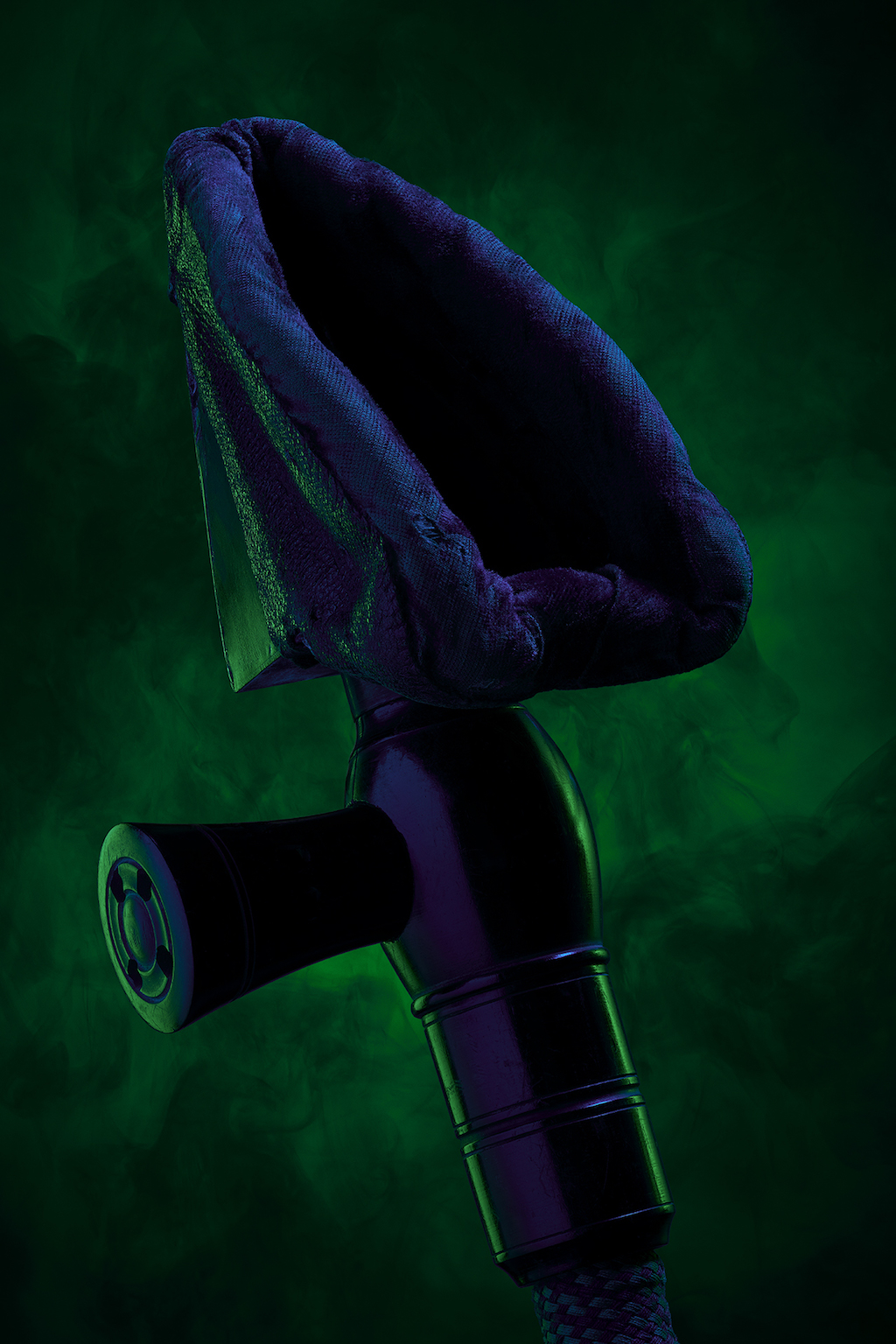
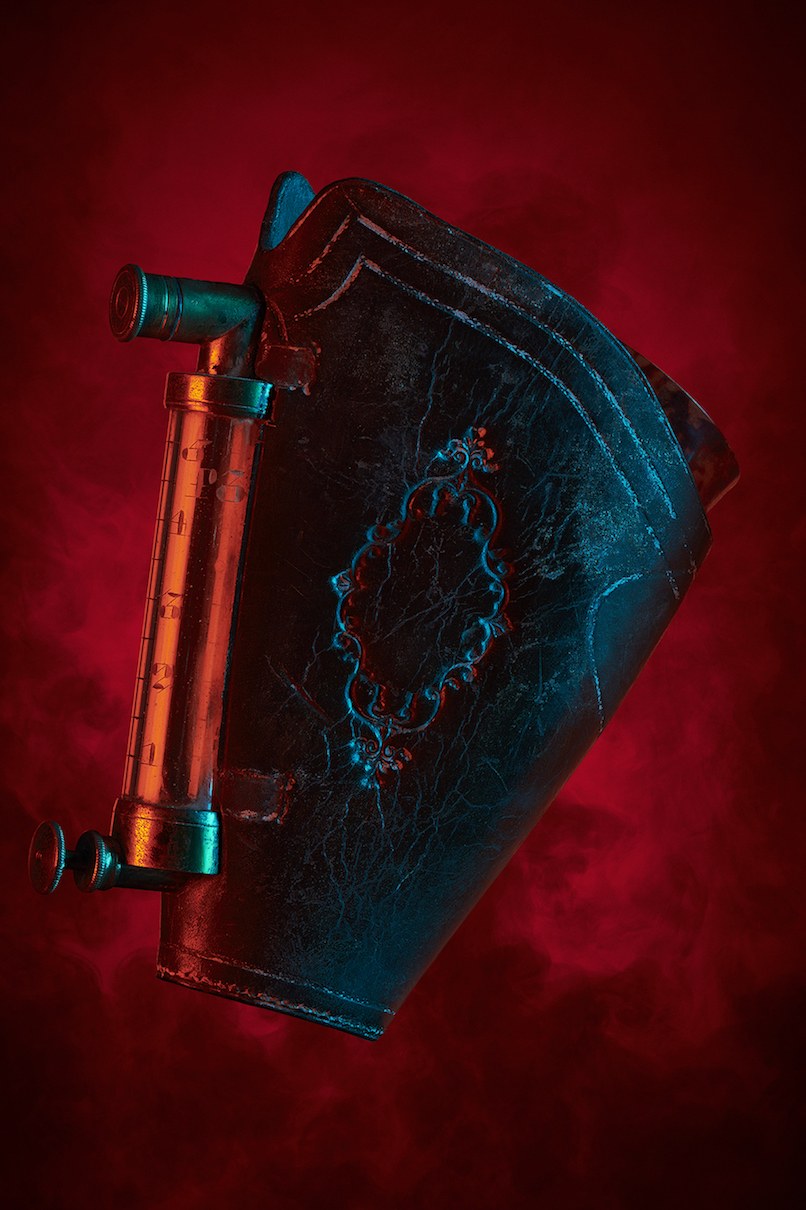
“I like the ambiguity of the objects when you can’t understand the full scale, weight or size,” Deproost says. “If you look at it and immediately think: ‘that’s a stethoscope’ or ‘that’s a pipe,’ you don’t make those other connections. Ambiguity makes viewers look for common ground, or something they recognise, reanimating the objects.”
Deproost’s evocative use of lighting also helps to detach his images from their original sources. In some cases, it serves to dramatise the objects’ original narratives. A small tin box with a battle scene shaped into its lid is brought to life under the artist’s fiery orange lights, with shadows emphasised and the violence of the scene brought into focus.
“On a basic level, bold colours draw the eye and engage the attention of the viewer,” Deproost says. “On a deeper level, the rich, saturated tones can evoke memories of objects, environments and experiences. I often limit the spectrum of light down to one or two colours. We see the world around us bathed in a full spectrum of white light the majority of the time, so disrupting this is an effective way of altering our perceptions of an object.”
The sinister tone that runs through some of the images evokes humans’ respiratory vulnerability, laid bare by Covid-19. While Deproost tells me that the pandemic was not specifically on his mind while selecting items, its spectre can be felt in the final, vaporous images. The use of smoke – shot separately and combined with the images in post-production – brings out the objects’ ominous undertones. A leather mask created to allow surgical patients to inhale ether feels claustrophobic, capturing the trauma of medical procedures before reliable painkillers were introduced.
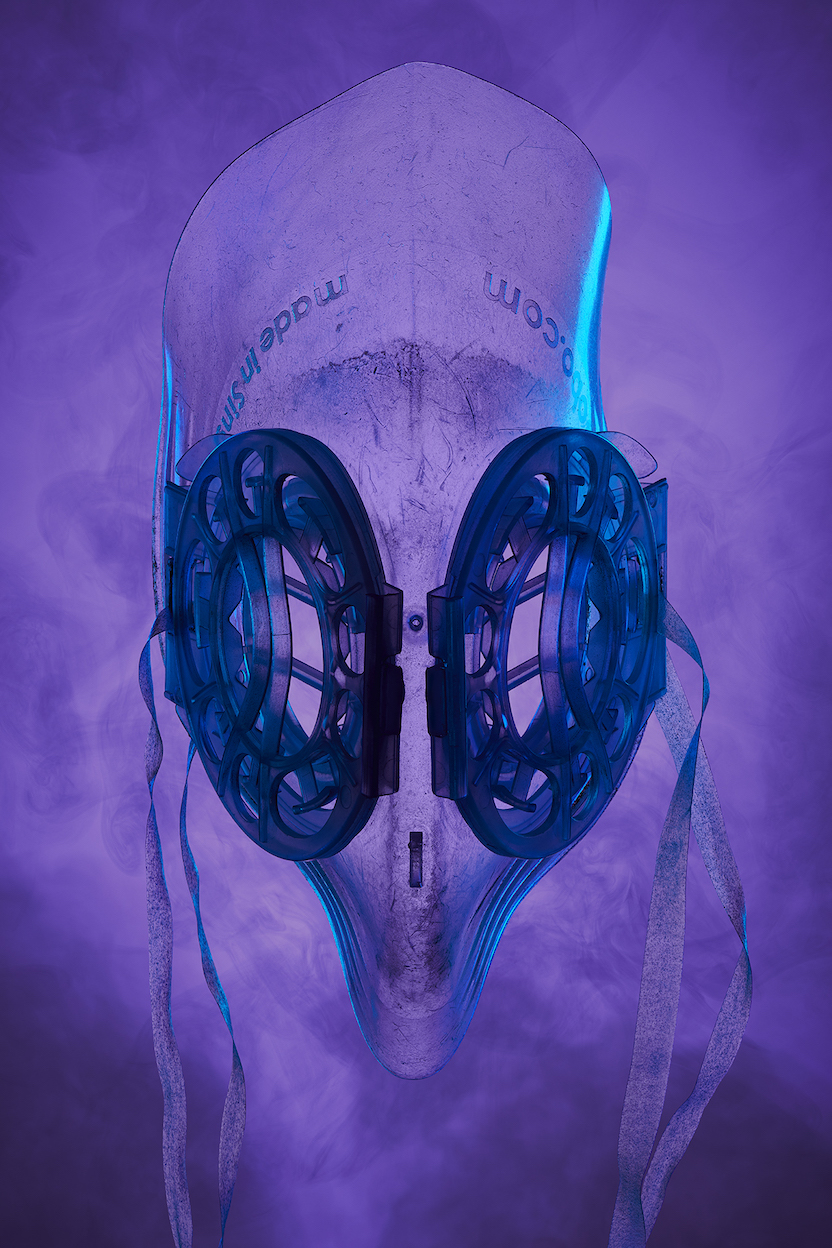
“The items are disembodied, yet their various curves and crevices point to the areas of the face, torso or limb that they might be intended to treat”
Deproost’s focus on the items’ details reflects developments in the design of medical instruments – some radical for their time. Through the years, their materials transform from dark metals, leathers and glass to clinical, transparent plastics. The items are disembodied, yet their various curves and crevices point to the areas of the face, torso or limb that they might be intended to treat.
The images in Unfamiliar feel celebratory. They push the limits of still life photography, but also highlight the skill involved in creating the original objects. For the non-scientific viewer, they offer fascinating historical insights into the medical profession. “The first museum project I worked on came initially from me thinking, as a still life photographer, how to get access to more interesting items,” he says. “When I was younger, I was really interested in history and photography. It’s nice to be able to do both in some sense now.”
Theo Deproost, Unfamiliar, is at RCP Regent’s Park until 28 July

